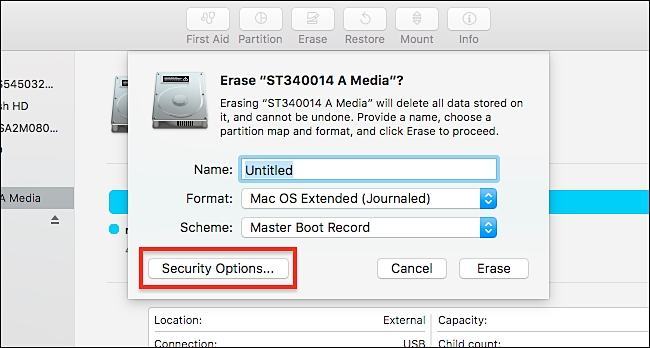


Information similar to the following is displayed: CoreStorage logical volume groups (1 found) To display details of a Fusion Drive, in Terminal type: To ensure you’re targeting the correct one I would suggest ejecting or disconnecting any additional drives first. However, other connected non-Fusion Drives – both internal and external – may also be displayed as logical volume groups. WARNING A Fusion Drive is classed as a logical volume group in CoreStorage. Opening Terminal from the Utilities menu in macOS Recovery Mode Once started, open Terminal from the Utilities menu:
Secure erase mac mac os#
At the prompt, enter Macintosh HD for the Name – it will likely be pre-populated with Preboot – and select Mac OS Extended (Journaled) for the Format.Select Container disk 2 in the sidebar and click the Erase icon in the toolbar.The Mac’s startup Fusion Drive should be listed in the Disk Utility sidebar:ġ The disk identifier may be another number. In the top-left corner of Disk Utility, click the View dropdown and select Show All Devices.Having started your Mac in Recovery Mode, open Disk Utility.IMPORTANT: Performing these steps will erase all the data on your Fusion Drive. However, they are still relevant when running macOS Mojave with an APFS-formatted Fusion Drive providing you first perform these extra steps: The instructions detailed in this article are only applicable to HFS+ Fusion Drives.
Secure erase mac install#
Since the release of Mojave, installing or updating macOS from an earlier version has forced startup Fusion Drives formatted as HFS+ to be automatically converted to APFS as part of the install process. Information for Fusion Drive Macs Running macOS Mojave (10.14)


 0 kommentar(er)
0 kommentar(er)
